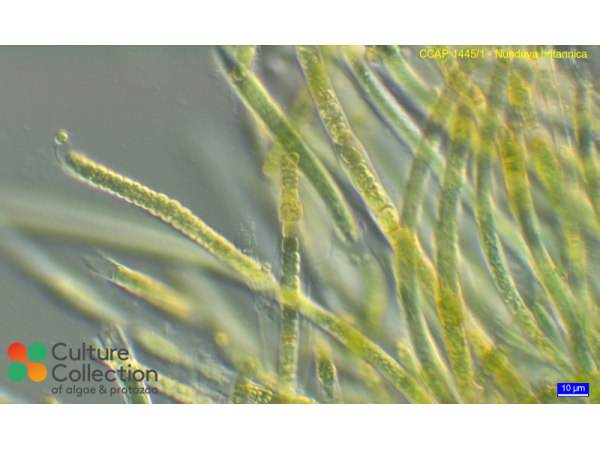Note: for strains where we have DNA barcodes we can be reasonably confident of identity, however for those not yet sequenced we rely on morphology
and the original identification, usually made by the depositor. Although CCAP makes every effort to ensure the correct taxonomic identity of strains, we cannot guarantee
that a strain is correctly identified at the species, genus or class levels. On this basis users are responsible for confirming the identity of the strain(s) they receive
from us on arrival before starting experiments.
For strain taxonomy we generally use AlgaeBase for algae and
Adl et al. (2019) for protists.
| Attributes | |
| Authority | Hauer 2018 |
| Isolator | Butcher (pre 1986) |
| Collection Site | top of estuary Newtown, Isle of Wight, England, UK |
| Notes | Isolation: pipetting; Renamed 2018 as per Algaebase/González-Resendiz et al. 2018; For a marine cyanobacteria culture medium without soil extract, see ASN-III, note that CCAP has not tried this media with this strain; LC-MS analysis by RGU in 2020 for cylindrospermopsins, microcystins and anatoxins: None Detected. |
| Axenicity Status | Bacteria present |
| Area | Europe |
| Country | UK |
| Environment | Brackish |
| GMO | No |
| Group | Cyanobacteria |
| In Scope of Nagoya Protocol | No |
| ABS Note | Collected pre Nagoya Protocol. No known Nagoya Protocol restrictions for this strain. |
| Collection Date | pre 1986 |
| Original Designation | VN8 / BC 33/8 |
| Pathogen | Not pathogenic: Hazard Class 1 |
| Strain Maintenance Sheet | SM_MarineCyanobacteria.pdf |
| Toxin Producer | Not Toxic / No Data |
| Type Culture | Yes |
| Taxonomy WoRMS ID | |
| Formerly Listed in CCAP as | Microchaete grisea Thuret ex Bornet & Flahault 1886 |
Related Products
CCAP MAASWBG-P
ASW:BG Medium
1 LITRE PREMADE
1 litre of sterile, ready to use, ASW:BG11 medium (a 1:1 mix of ASW and BG11 media). ASW:BG medium



